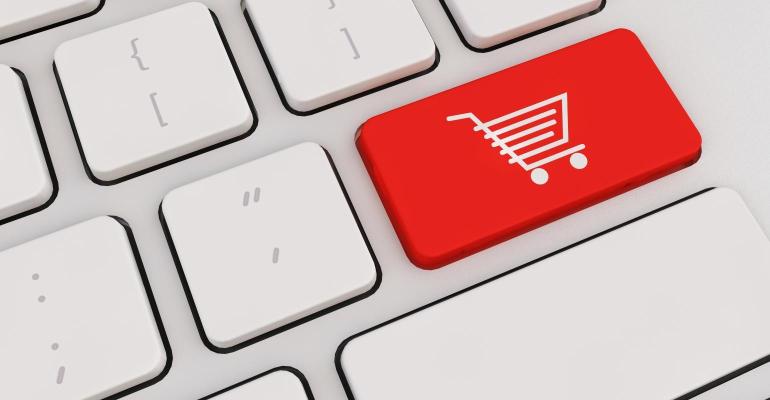U.S. grocery sales are projected to slump over the next five years compared to the previous five, and ecommerce purchases will rule, according to the U.S. eGrocery Sales Forecast: 2024-28, developed by Brick Meets Click and sponsored by Mercatus.
Between 2019 and 2023, the pandemic and inflation lit a fire under grocery sales as the compound annual growth rate (CAGR) rose to 5.6%. However, the next five-year segment will only see a 1.6% CAGR.
According to the report, ecommerce will overpower brick-and-mortar during that same period, with a projected increase at a CAGR of 4.5% versus a 1.3% rate for in-person grocery shopping.
Total online sales could reach $120 billion by the end of 2028 and account for 12.7% of the total grocery sales in the U.S., a 170-basis point increase over 2023. Furthermore, delivery and pickup sales combined will represent 10.7% of total grocery sales in five years.
Pickup sales, however, will grow faster (5.4%) than delivery (4.4%) and ship-to-home (2.8%) through 2028, and pickup will remain the dominant method, accounting for nearly 47% of all online grocery sales.
“Two factors are creating significant headwinds that impact our eGrocery forecast. First, the market is maturing. Nearly all of the people interested in online grocery shopping have used it at least once by now,” stated David Bishop, partner at Brick Meets Click. “Second, even though inflation has recently fallen faster than expected, its cumulative effect continues to drive a flight-to-value behavior in grocery shopping and that will slow topline sales growth.”
The report predicts grocery retailers will focus on first-party online services to better control operating expenses and the customer experience. Third-party marketplaces represented more than half of ecommerce sales in 2023. In response to the shift to first-party services, third-party providers will find more ways to reduce the product price gap with first-party sites, which will add more disinflationary pressure on the topline measure.
Retailers are also expected to expand their pickup services over the next five years. Currently, households in suburban markets have four times as many delivery options to consider compared to pickup, as most retailers are accessible via multiple third-party marketplaces.
The forecast identified order frequency as the most important growth driver through 2028. In addition, building higher average order values will largely result from a customer mix that includes a higher share of repeat customers who spend more compared to first-time customers.
“It’s clear that creating stronger connections with existing customers is essential to driving higher spending and order activity,” said Mark Fairhurst, Global Chief Growth Officer at Mercatus. “Expanding personalization efforts to include targeted offers or tailored recommendations, will play a vital role in increasing repeat purchase behavior and eGrocery sales.”





